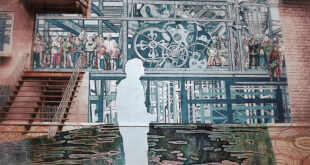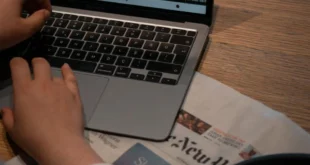
The concept is simple, hence the low cost. Viewers with the kit will be able to use their remote controls to take part in quiz shows, respond to adverts and vote during Big Brother-type reality shows. Crucially, and of vital interest to players in the Middle East like Star TV, the technology will work seamlessly across regions. Viewers will also be able to send e-mails and forward photo images and MP3 music files.
Broadcasters will still have to overcome the resistance of certain Middle East countries as well as India and China to see DTH's benefits fully exploited. China, for example, is committed to full digital distribution by 2015, and this technology could give every user basic e-mail connectivity via the TV set.
The clever thinking behind the concept uses the set-top box's built-in power supply and cabling to send the low-power outbound message. A viewer's existing Low Noise Block (LNB) will need to be replaced with a new two-way LNB in order to send messages back to the satellite. Upstream capacity is 64 kb/s per second, and SES will use satellite's Ka-band for upstream traffic.
The target cost of components, says the team behind the planning, will be less than $50, plus installation. SES' Christophe Duplay, VP of services development, says the consortium's aim is to eventually have SatMode fitted into every set-top box and for this reason they will use a wholly open standard for its implementation. He added that the SatMode partners are committed to publish the open system parameters and technical interfaces by mid-2004.
Duplay says this is an important project for Direct To Home (DTH), and is the natural extension for improved set-top boxes. "Satellite is the driver, we can all see that. And this [device] will help satellite keep the competitive advantage." With its 'always on' appeal, SES says that SatMode eliminates the need for any telephone link.
And what are those applications? SES rolled off an impressive list, including tele-voting, home shopping, direct marketing, VOD/impulse PPV, TV-based SMS messaging, live TV chat, e-mail, games and gambling. Additionally, broadcasters could use SatMode for its own polling and rating/statistical measurement of channels watched. Other ideas include, at least on those boxes which include Visa-type payment card slots, tele-payment, as well as lottery participation. Key to almost all these is that the viewer response is usually a single press of a button on the remote control.
Having the two-way modem fitted would mean the end of expensive telephony charges to "dial up" participation in shows like "Big Brother." Duplay said the device would be wholly secure from hacking and could use existing installed dishes. "Our objective is to see SatMode itself be the universal standard for the RCS (return channel by satellite) industry."
AsiaSat's chairman Romain Bausch said in April that prototypes had already been tested. "All the components are readily available in the market, at prices no more than US$50, which is the overall target for the system. Our industrial partners are going full speed and we are confident of hitting our timetable."
SatMode has set itself an aggressive design and development task. Set-top box specialists Canal Plus Technologies and Newtec will "design, test and integrate" by the end of 2003. Newtec will manufacture the interactive LNB (now dubbed iLNB), with Thomson (which now owns Canal Plus Technologies) taking care of prototypes and consumer terminals. The chip-set will come from STMicroelectronics. "We expect this to be adopted by the satellite community at large. The upside is considerable."
That upside opportunity is tempered by an obvious challenge: getting people - or broadcasters - to invest in the new kit. Few broadcasters, and few individual subscribers, will want to swap out a legacy of expensively installed set-top boxes in a hurry. SatMode is going to have to show some compelling upside revenue examples to convince satellite platforms to embrace this new technology overnight.
However, it is also fair to say that most platform operators have already gone through many boxes in the past 10 years, from early simple 16-channel analogue models, to more sophisticated analogue models, through digital and now second generation digital. Who can guess at what 2005's box might look like? And five years after that, by 2010, it is quite possible that along with ubiquitous PVR functionality, a two-way return path will be standard in every box. That is SatMode's aim: to see their creation become an essential part of tomorrow's set-top boxes.
 Arab Media & Society The Arab Media Hub
Arab Media & Society The Arab Media Hub




